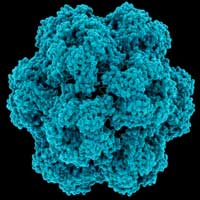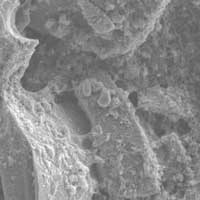 Nanoengineers are working on a COVID-19 vaccine using an unconventional candidate: a plant virus.
Nanoengineers are working on a COVID-19 vaccine using an unconventional candidate: a plant virus.
Tuesday, April 21, 2020
Nanoengineers marry molecular farming and advanced manufacturing to develop a COVID-19 vaccine
 Nanoengineers are working on a COVID-19 vaccine using an unconventional candidate: a plant virus.
Nanoengineers are working on a COVID-19 vaccine using an unconventional candidate: a plant virus.
Flexible pressure sensor for human-machine interaction
 Researchers have developed a high-performance and zero-standby-power-consumption flexible pressure sensor with ultrahigh sensitivity in wide linear response range.
Researchers have developed a high-performance and zero-standby-power-consumption flexible pressure sensor with ultrahigh sensitivity in wide linear response range.
High-quality hexagonal boron nitride grown at atmospheric pressure
 Researchers have reported a significant step forward in growing monoisotopic hexagonal boron nitride at atmospheric pressure for the production of large and very high-quality crystals.
Researchers have reported a significant step forward in growing monoisotopic hexagonal boron nitride at atmospheric pressure for the production of large and very high-quality crystals.
New hybrid nanomaterial improves the performance of silicon in Li-ion batteries
 Researchers have developed a new hybrid material of mesoporous silicon microparticles and carbon nanotubes that can improve the performance of silicon in Li-ion batteries. Advances in battery technology are essential for sustainable development and for achieving climate neutrality.
Researchers have developed a new hybrid material of mesoporous silicon microparticles and carbon nanotubes that can improve the performance of silicon in Li-ion batteries. Advances in battery technology are essential for sustainable development and for achieving climate neutrality.
Diamond nanothreads shine in energy storage solution
 Researchers have proposed the design of a new carbon nanostructure made from diamond nanothreads that could one day be used for mechanical energy storage, wearable technologies, and biomedical applications.
Researchers have proposed the design of a new carbon nanostructure made from diamond nanothreads that could one day be used for mechanical energy storage, wearable technologies, and biomedical applications.
Terahertz science discloses the ultrafast photocarrier dynamics in carbon nanotubes
 Scientists come closer to unraveling the physics of quasiparticles in carbon nanotubes.
Scientists come closer to unraveling the physics of quasiparticles in carbon nanotubes.
A nanostructured biosensor detects SARS-CoV-2 concentration in the air
 A team of researchers has succeeded in developing a novel sensor for detecting the new coronavirus. In future it could be used to measure the concentration of the virus in the environment -- for example in places where there are many people or in hospital ventilation systems.
A team of researchers has succeeded in developing a novel sensor for detecting the new coronavirus. In future it could be used to measure the concentration of the virus in the environment -- for example in places where there are many people or in hospital ventilation systems.
Cool down fast to advance quantum nanotechnology
 Rapidly cooling magnon particles proves a surprisingly effective way to create an elusive quantum state of matter, called a Bose-Einstein condensate. The discovery can help advance quantum physics research and is a step towards the long-term goal of quantum computing at room temperature.
Rapidly cooling magnon particles proves a surprisingly effective way to create an elusive quantum state of matter, called a Bose-Einstein condensate. The discovery can help advance quantum physics research and is a step towards the long-term goal of quantum computing at room temperature.
Subscribe to:
Comments (Atom)
